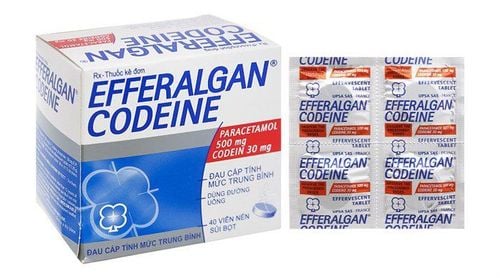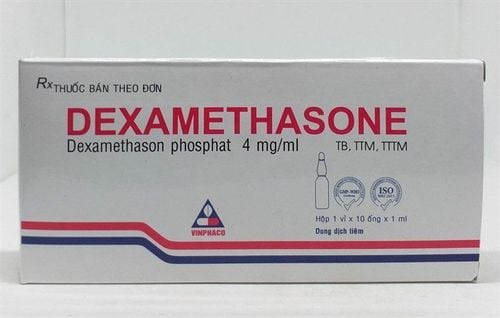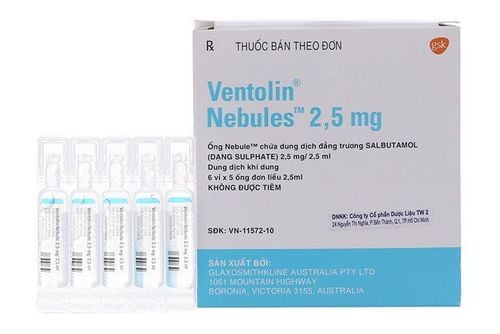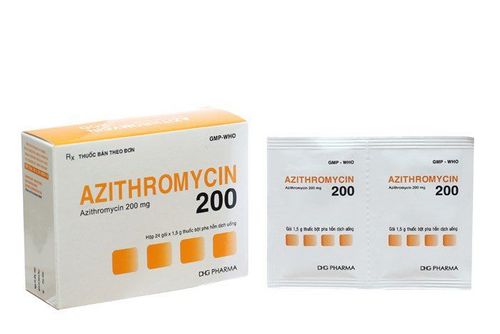This is an automatically translated article.
Rhinovent is commonly indicated for the treatment of acute asthmatic conditions in both children and adults. In addition, Rhinovent medicine also helps to reverse the symptoms of chronic obstructive pulmonary disease in the exacerbation stage. Currently, Rhinovent is used as an aerosol nasal spray and patients need to be treated according to the dose recommended by the doctor.
1. What is Rhinovent?
Rhinovent belongs to the group of drugs that act on the respiratory tract, is made in the form of an aerosol nasal spray, for the treatment of acute asthmatic conditions in children and adults. In addition, Rhinovent medicine is also used to quickly reverse the symptoms of chronic obstructive pulmonary disease.Rhinovent Nasal Spray is originated from Korea and is now widely circulated in Vietnam. The main active ingredient in Rhinovent is Ipratropium (as Ipratropium bromide) 4.5mg with a combination of other auxiliary excipients. In general, Rhinovent medicine is highly appreciated by the expert team for its ability to effectively treat severe acute asthma attacks, helping patients recover quickly as soon as possible.
2. What does Rhinovent do?
2.1 Uses of the active ingredient Ipratropium The main active ingredient Ipratropium in Rhinovent is known for its ability to resist Acetylcholine, thereby inhibiting the parasympathetic system. According to research, Ipratropium has a selective effect on relaxing bronchial smooth muscles, but does not affect the function of bronchial mucus secretion as well as other body functions, such as the digestive tract, eyes. and cardiovascular.
2.2 Indications for use of Rhinovent drugs Rhinovent drugs are usually prescribed for the following cases and patients:
Relief of acute and severe asthma attacks in children. Use Rhinovent in combination with drugs with selective effects on Beta2 - adrenergic. Elimination of acute asthma attacks as well as exacerbation of chronic obstructive pulmonary disease in adults. Using Rhinovent in combination with drugs with selective effects on Beta2 - adrenergic for quick and not long-lasting effects. Maintenance therapy helps to prevent symptoms of bronchial smooth muscle spasm during recovery in patients with chronic obstructive pulmonary disease. 2.3 Contraindications to use Rhinovent Do not use Rhinovent for cases of allergy or hypersensitivity to Ipratropium or any of the excipients contained in the drug. In addition, Rhinovent should be avoided in pregnant women, especially in the first 3 months of pregnancy and nursing mothers.
3. Instructions on dosage and how to use Rhinovent
Dosage of Rhinovent drug
Rhinovent drug is used according to the dosage recommended by the doctor, depending on the health status and age of the patient, specifically:
Dose for children < 2 years old: Use a mixture 1/2 single dose ampoules of 250mcg/2ml mixed with 4ml physiological saline solution. In case of need can be used about 3 times / day. Dose for children from 2 to 12 years old: Use a mixture of 1 single dose ampule of 250mcg/2ml mixed with 4ml physiological saline solution. Can be used 3 times a day if needed. Dose for children > 12 years old and adults: Use a mixture of a single dose of 500mcg / 2ml mixed with 5ml physiological saline solution. Rhinovent Nasal Spray is prepared in the form of aerosol nasal spray, so the drug will be administered by inhalation. When using, the patient can put the mixture of drugs mixed according to the dosage instructions above into the nebulizer, then spray for 10 - 30 minutes for each session. The specific time of spraying will be based on the doctor's assessment of the patient's subject, disease severity as well as drug tolerability.
4. What side effects can Rhinovent cause?
Besides the therapeutic benefits that Rhinovent brings, patients may also inadvertently experience some unwanted side effects during use, such as:
Irritation of the larynx. Dry mouth. Thirsty. Itchy throat. When any unusual reaction related to Rhinovent occurs, the patient should stop the treatment and promptly notify the doctor so that the remedy can be found soon.
5. Notes and cautions when treating with Rhinovent
5.1 General Precautions while taking Rhinovent Here are some things that patients need to be cautious of during Rhinovent treatment:
Avoid spraying the eye drops as the active ingredient in Rhinovent can dilate copper. death. This is particularly important when administering the drug to patients with angle-closure glaucoma. Always read the instructions on the package carefully or consult your doctor before starting treatment with Rhinovent. Carefully check the expiry date of Rhinovent medicine to prevent the risk of using expired medicine. Rhinovent should be stored in a cool, dry location, avoiding areas with high heat or high humidity. 5.2 What drugs interact with Rhinovent? During the use of the drug, there is a risk of competitive reactions or interactions between Rhinovent and some other drugs. This can reduce the effect of the drug, even reduce absorption and increase the toxicity of the active ingredient in the drug to the body.
To prevent the risk of interaction between Rhinovent and other pharmaceutical products, patients need to tell their doctor a list of drugs, vitamins or supplements currently taking.
In addition to the above uses, if during the use of Rhinovent, the patient has any other questions, they can contact the doctor, pharmacist for advice and in-depth answers.













